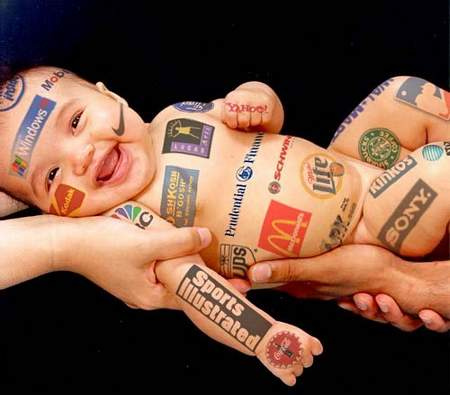Emotional attachments to brands has become a lot more acceptable.
But many small business owners are still sceptical.

In my opinion, one of the most significant developments in communications in the past 15 years is the widespread acceptance of the notion that ‘branding’ is important for virtually every product, service, organization and even people – not just for packaged goods products.
It hasn’t always been this way. I remember, in 2000, making a presentation to an educational products company who needed a new website. They were still wrestling with the fact that a transition to a web-based delivery system meant they needed a better visual identity; when I started to talk about ephemeral concepts like ‘brand personality’ and ’emotional engagement’, they started to roll their eyes and I could see them dismissing me as another crackpot marketing person who was going to try to get them to spend all their money without regard for their bottom line.
“Look,” they said, “All this talk about emotional attachments to brands may be fine when you’re trying to trick people into buying your product, like if you’re trying to convince people there’s a difference between Coke and Pepsi. But people buy our product because we provide the best materials at the best price.” In other words, when the functional benefits of a product or service are legitimate, branding is not only unneccessary but somehow distasteful.
The DotCom era changed all that
Say what you will about the dotcom boom and bust of 1999-2001, it changed the branding landscape forever. People watched as vaporware high-tech companies which had nothing but a couple of tech geniuses and a compelling brand story managed to attract an awful lot of money – and everyone had to admit that even in boardrooms, lots of purchasing decisions were being based on emotional responses.
Throughout the 2000s, more research was done on emotional attachments to a brands and how they affect buying habits across all kinds of market sectors. Today, most of us accept that the products we love – and buy – the most are not necessarily the ones with the optimal combination of functional benefits and low price. We’re not only comfortable with the fact that emotional responses trigger buying decisions, but that buying certain products and services can trigger emotional responses in return.
Branding still makes some people very uneasy
– especially when it comes to their own business
These days, I don’t get much eye-rolling when I talk to clients about brand-building and emotional engagement with brands – especially when half the people in the boardroom have an iPhone in their pocket.
But there’s still one group that remains resistant: The small business owner.
The successful small business owner may be just as brand-aware as anyone else, with a passion for their iPhone or their Range Rover or their Sub-Zero refrigerator. But when it comes to their own business, they still feel, somehow, that to put too much effort into their brand identity – to try to attach meaning to their product or service that goes beyond purely functional benefits like being smarter, cheaper or faster than their competitors – somehow cheapens what they do for a living.
I get it: If you’ve grown your business from nothing to a $5-$10 million organization, you’ve usually spent years trying to deliver a great product, provide excellent customer service, building strong relationships with your stakeholders. In many ways, you are the brand – so when someone comes along and says that if you want to take your business to the next level, you need a ‘brand identity’ with a ‘personality’ and ’emotional resonance’, it’s natural to fear that you’ll be pushed into a brand that seems ‘fake’ and not reflective of the very real values – and value – that you stand for.
But a good brand is anything but fake – and tomorrow we’ll talk about how to build one.



